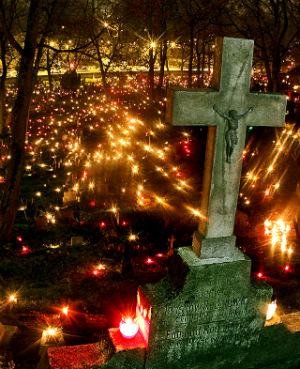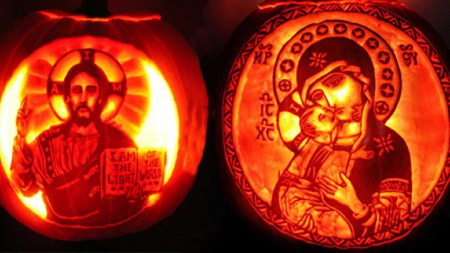We ask you, humbly: don't scroll away.
Hi readers, it seems you use Catholic Online a lot; that's great! It's a little awkward to ask, but we need your help. If you have already donated, we sincerely thank you. We're not salespeople, but we depend on donations averaging $14.76 and fewer than 1% of readers give. If you donate just $5.00, the price of your coffee, Catholic Online School could keep thriving. Thank you.Help Now >
St. Frideswide
FREE Catholic Classes
(FRIDESWIDA, FREDESWIDA, French FRÉVISSE, Old English FRIS).
Virgin, patroness of Oxford, lived from about 650 to 735. According to her legend, in its latest form, she was the child of King Didan and Safrida, and was brought up to holiness by Algiva. She refused the proffered hand of King Algar, a Mercian, and fled from him to Oxford. It was in vain that he pursued her; a mysterious blindness fell on him, and he left her in her cell. From this eventually developed the monastery, in which she died in 19 October (her principal feast ), and was buried. The earliest written life now extant was not composed until four hundred years after her death, but it is generally admitted that the substance of the tradition has every appearance of verisimilitude. From the time of her translation in 1180 (commemorated 12 Feb.) from her original tomb to the great shrine of her church, her fame spread far and wide; for the university was now visited by students from all parts, who went twice a year in solemn procession to her shrine and kept her feasts with great solemnity. Cardinal Wolsey transformed her monastery into Christ Church College, King Henry made her church into Oxford cathedral, but her shrine was dismantled, and her relics, which seem to have been preserved, were relegated to some out-of-the-way corner. In the reign of Edward VI, Catherine Cathie was buried near the site of her shrine. She was a runaway nun, who had been through the form of marriage with Peter Martyr, the ex-friar. The Catholics, as was but natural, ejected her bones in the reign of Queen Mary. But after Elizabeth had reinstated Protestantism, James Calfhill, appointed Canon of Christ Church in 1561, dug up Cathie's bones once more, mixed them up (in derision of the Catholics ) with the alleged remaining relics of the saint, and buried them both together amid the plaudits of his Zwinglian friends in England and Germany, where two relations of his exploit, one in Latin and one in German, were published in 1562. The Latin relation, which is conveniently reprinted in the Bollandists, is followed in the original by a number of epitaphs on the theme Hic jacet religio cum superstitione , but it does not seem that these words were incised on the tomb, though it is often said that they were. The episode strikingly illustrates the character of the continuity between the ancient faith and the reformed religion of England.
Join the Movement
When you sign up below, you don't just join an email list - you're joining an entire movement for Free world class Catholic education.
-

-
Mysteries of the Rosary
-
St. Faustina Kowalska
-
Litany of the Blessed Virgin Mary
-
Saint of the Day for Wednesday, Oct 4th, 2023
-
Popular Saints
-
St. Francis of Assisi
-
Bible
-
Female / Women Saints
-
7 Morning Prayers you need to get your day started with God
-
Litany of the Blessed Virgin Mary
All Saints' Day, Halloween and All Souls' Day: What's the difference?
-

Should Christians Celebrate Halloween?
-

Since when did Halloween become a Christian holiday?
-
ADORABLE: A Little Boy's Heartfelt Lunchtime Prayer
-
Scientists Decode 3,000-Year-Old Babylonian Tablet, Revealing Potential Location of Noah's Ark
Daily Catholic
 Daily Readings for Friday, November 01, 2024
Daily Readings for Friday, November 01, 2024 St. Valentine Berrio-Ochoa: Saint of the Day for Friday, November 01, 2024
St. Valentine Berrio-Ochoa: Saint of the Day for Friday, November 01, 2024 Litany of the Saints: Prayer of the Day for Friday, November 01, 2024
Litany of the Saints: Prayer of the Day for Friday, November 01, 2024- Daily Readings for Thursday, October 31, 2024
- St. Wolfgang: Saint of the Day for Thursday, October 31, 2024
- Memorare: Prayer of the Day for Thursday, October 31, 2024
![]()
Copyright 2024 Catholic Online. All materials contained on this site, whether written, audible or visual are the exclusive property of Catholic Online and are protected under U.S. and International copyright laws, © Copyright 2024 Catholic Online. Any unauthorized use, without prior written consent of Catholic Online is strictly forbidden and prohibited.
Catholic Online is a Project of Your Catholic Voice Foundation, a Not-for-Profit Corporation. Your Catholic Voice Foundation has been granted a recognition of tax exemption under Section 501(c)(3) of the Internal Revenue Code. Federal Tax Identification Number: 81-0596847. Your gift is tax-deductible as allowed by law.






 Daily Readings for Friday, November 01, 2024
Daily Readings for Friday, November 01, 2024 St. Valentine Berrio-Ochoa: Saint of the Day for Friday, November 01, 2024
St. Valentine Berrio-Ochoa: Saint of the Day for Friday, November 01, 2024 Litany of the Saints: Prayer of the Day for Friday, November 01, 2024
Litany of the Saints: Prayer of the Day for Friday, November 01, 2024


